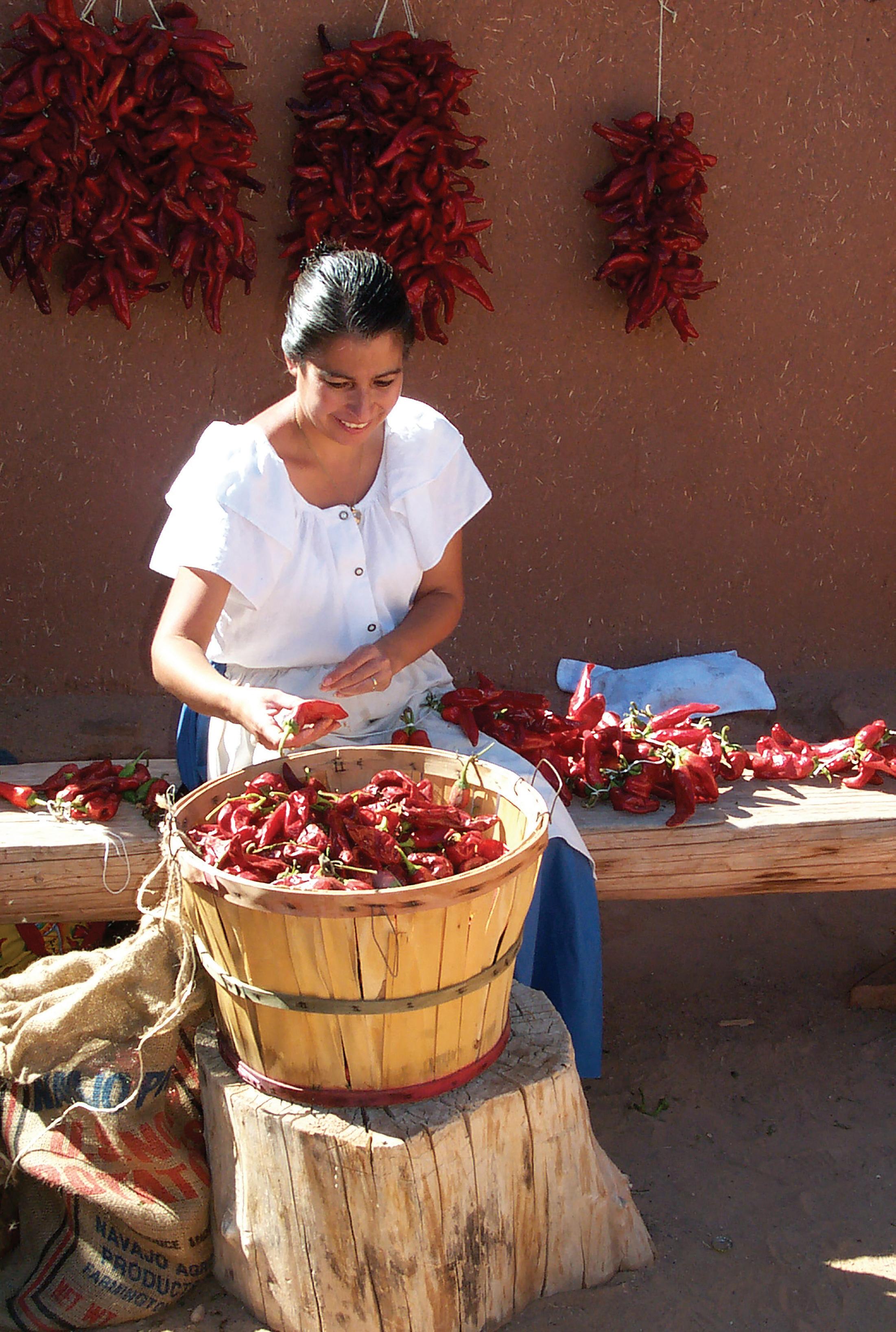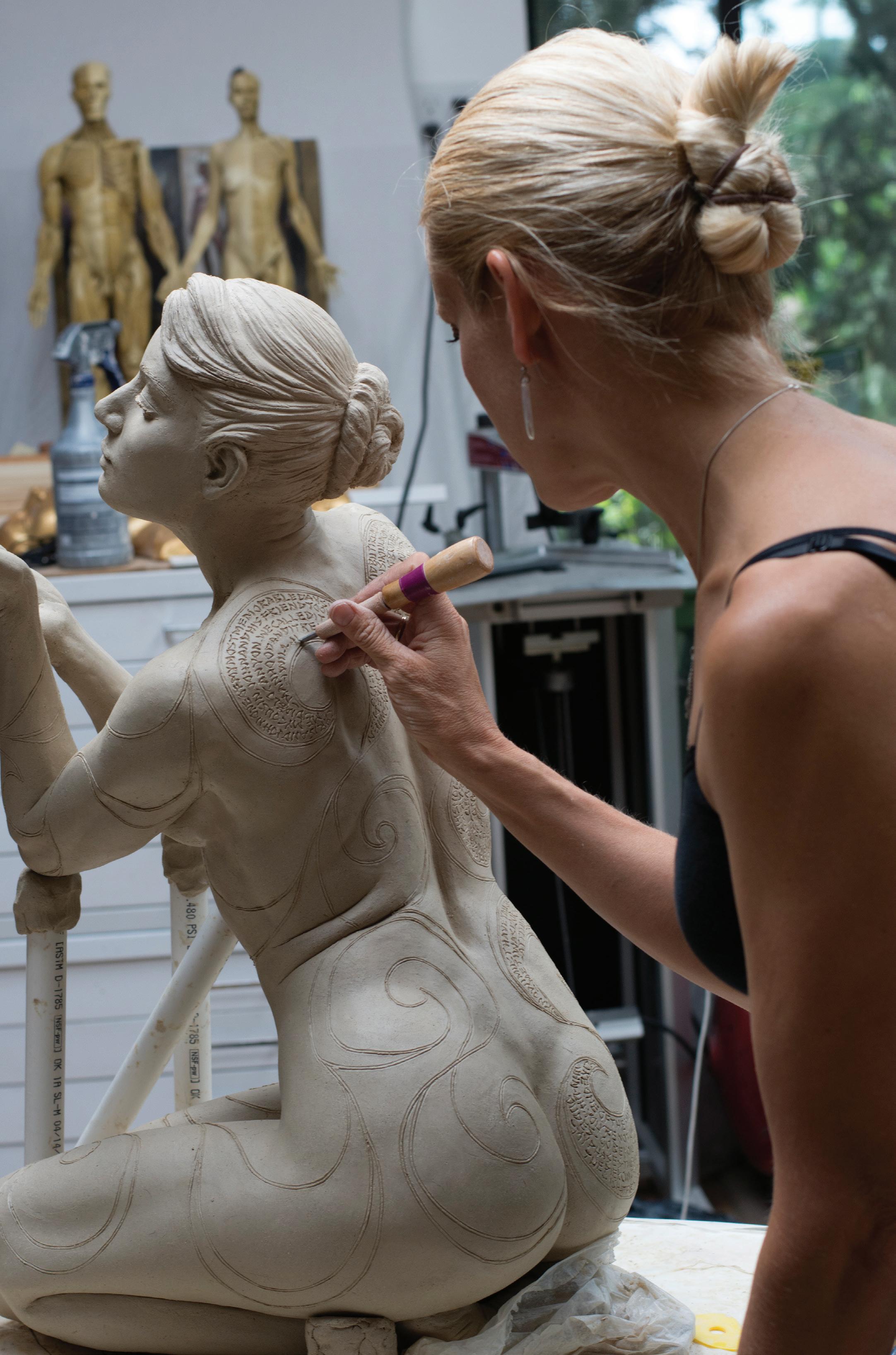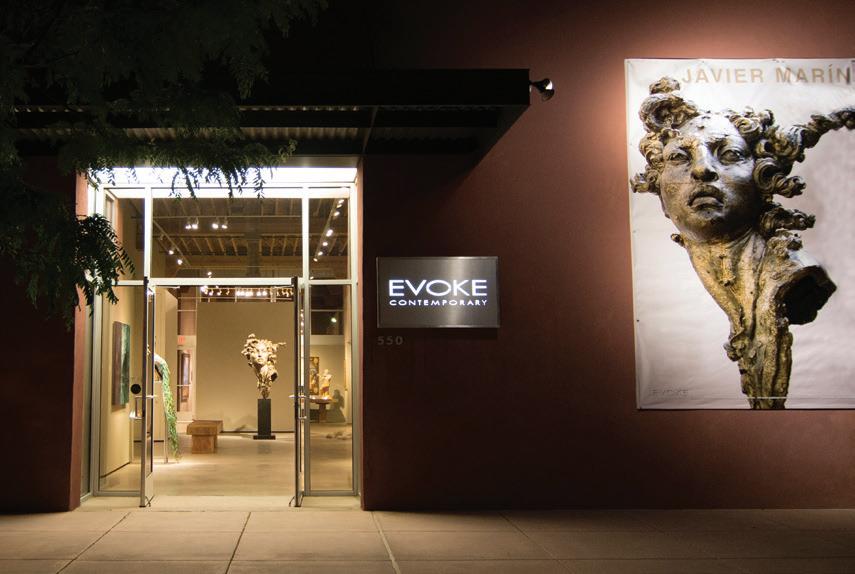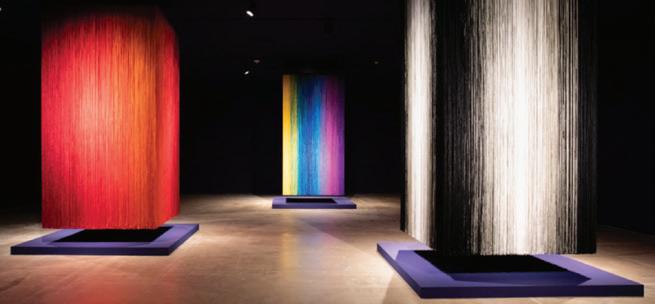
5 minute read
El Día de los Muertos: Nicholas Herrera
Today Nicholas Herrera is welding. A man of many talents and skills, he’s best known for his santero work; his carvings and retablos can be seen at Evoke Contemporary, in private collections, and in museums. What he’s working on now is a skull formed of found metal objects: horseshoes, metal hooks, bolts, a screw clamp. His yard looks like a sculpture garden, his house encircled by large pieces of metal, including an old truck body that once belonged to his grandfather. It may not sound like an artistic sculpture in process, but the cross cutouts covering the headlights hint at the direction it’s headed in. Asked how he felt the COVID-19 pandemic has shown up in his work, Herrera allowed that, considering that he lives in the relatively secluded, remote village of El Rito, 60 miles northwest of Santa Fe, it had little direct effect on his everyday life. But the pandemic did show up in his art: elsewhere in his yard is a giant metal sculpture of Santa Corona. A second-century saint who died a martyr’s death, Corona (also known as St. Stephanie) in some parts of the world is prayed to for help with epidemics and infectious diseases. Historically, Corona (the name means crown in Latin and Spanish) has been a relatively obscure saint, but with the recent pandemic has gained greater prominence. With its sickle and black bird, Herrera’s sculpture of her looks more like Death than a pious saint. Herrera has married the martyr’s story with the virus itself.
Opposite: Nicholas Herrera, La Delta, mixed media, 35” x 49” x 22”. Above: Nicholas Herrera with La Corona. Photo: Beth Wald.

Nicholas Herrera is a descendant of José Inez Herrera, a santero who worked in El Rito in the late 1800s to early 1900s. There’s little information about this artist, now known as the “The Death Cart Santero.” One of his most famous sculptures—of a skeleton in a cart, representing Death—is now exhibited at the Denver Art Museum. Nicholas Herrera’s early work also included much Death Cart imagery. In fact, death is a common theme in his work for several reasons, including a severe, near-death automobile accident he experienced when he was 25, and which set him on the path to becoming a professional artist. Herrera’s current body of work, too, is based on a theme of death: El Día de los Muertos (The Day of the Dead).
José Inez Herrera, Death Cart, 1890-1910, wood, leather, hair, feather, metal, silk, 48” x 21.5”. Photo: Denver Art Museum.

Top to bottom: Nicholas Herrera, Cruzando La Frontera, acrylic on panel, 24” x 48.25”. Nicholas Herrera, El Santero del Rito, handcarved wood with acrylic and wire, 10” x 20” x 13”. Photo: Beth Wald.
El Día de los Muertos is primarily celebrated in Mexico, but its roots go back as far as the Aztecs and Christianity’s All Souls’ Day. Like so many celebrations and rituals, this one took on a new image and meaning as the cultures of the Old and New Worlds clashed and combined. Today, El Día de los Muertos is a holiday for the living and the dead. In the weeks before the holiday, many homes build altars for ofrendas, offerings honoring family members who have died. The holiday is mostly known for its skull imagery, which is becoming more popular throughout the United States. Though less widely celebrated in New Mexico than in Mexico, Day of the Dead imagery is ever-present. Like the tradition of the Day of the Dead, Herrera’s work is a celebration of both life and death, and his skulland-death imagery always includes a bit of humor. What at first seems to be a large, ornate metal cross topped with skulls contains, when examined more closely, much more: a bike chain, wrenches, multiple pairs of scissors, and two doorknobs, all welded together.
A retablo in Herrera’s studio that contains images of skeletons at first glance seems very Día de los Muertos— but the skeletons wear Spanish-style flat-brimmed hats, and the decorative borders bring into focus something traditionally New Mexican: the lines in the border are reminiscent of the famous Laguna Pueblo altar screen by the anonymous artist known as the Laguna Santero, one of the most famous New Mexican artists of the late 18th and early 19th centuries.

Ultimately, there’s no mistaking Nicholas Herrera’s work as anything but New Mexican. Early artwork dealing with death was made for the Penitente Brotherhood, who often commissioned art that many considered a bit gruesome for the general public. In fact, the emphasis on the suffering of life and of Jesus, on the traditions of the Death Cart and Saint Sebastian (who was tied up and shot with multiple arrows before being beaten to death), stems from the Penitentes’ solemn Good Friday traditions. Herrera makes an interesting jump to the more celebratory Day of the Dead—two sentiments that could not be more different, suffering vs. celebration. It’s hard to say which Herrera leans more heavily on, or whether it matters. In some ways, it seems that putting a label on his art is always done with a wink.
In this pocket of northern New Mexico, the lines between art, culture, and religion are often dim, even invisible. His new work introduces a slightly new spin for Herrera, who says he celebrates the Day of the Dead every day. His work often hints at mortality, a theme ever-present for him. Paramount in Herrera’s mind now is the recent fire near El Rito, which burned a portion of his family land, held for many generations, in the nearby mountains. As it has for many New Mexicans, the fire threatened Herrera’s family history and culture. He feels this right now, and is sure those feelings will soon be reflected in his work.
—Jana Gottshalk

Nicholas Herrera, Inferno, acrylic on panel, 48” x 23.25”.









